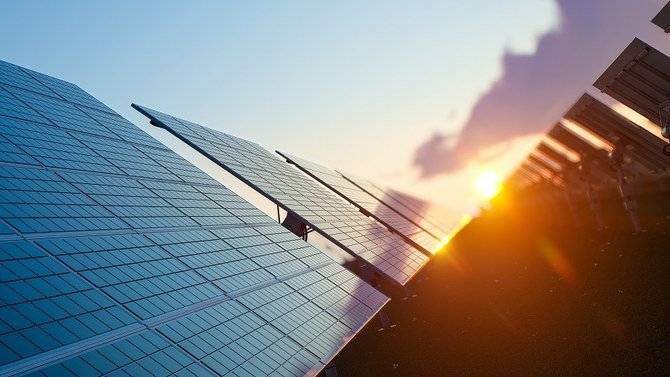
The commonly opted renewable technologies on farms are solar Photovoltaic panels for electricity and biomass for heat generation…writes Vishal Gulati
With three-quarters of British land area in the agricultural sector, it is accelerating the transition from fossil fuels to clean power.
There’s a big opportunity in around 1,92,000 farms in the UK, which is heavily reliant on natural gas, with solar and wind power going cheaper than fossil fuels.
As the power sector accounts for a quarter of global greenhouse gas emissions, 40 per cent of farmers in the UK are using the sun, wind and farm by-products to produce low-carbon energy despite implications of both Brexit and Covid-19.
The commonly opted renewable technologies on farms are solar Photovoltaic panels for electricity and biomass for heat generation.
As per official estimates, the energy produced in the rural areas generates at least 10 per cent of the UK’s electricity needs.

Meet Indian-origin Harjit Singh Gill, who lives in a farmhouse in Birdwood in the countryside of Gloucester, the city famed for historical warehouses that stand as proud guardians to Britain’s most inland port.
“To meet the goals of the government for low-carbon heating systems, we have decided to move away from fossil fuels towards clean power. We have opted low-carbon electrically powered heat pumps to replace the oil-fired heating system,” Gill, a three-time Mayor of Gloucester said.
As per UK’s energy white paper unveiled in December 2020, the government outlines the new heating installs to be low carbon by the mid-2030s.
For cutting emissions from heating it has rolled out a three-year plan to offer 5,000 pounds grants to help 90,000 households install low-carbon heating systems.
It is part of about 3.9bn pounds worth of funds to support low-emissions homes, including grants to support the replacement of gas boilers with cleaner technologies.
The UK is aiming to end the sale of fossil fuel boilers, which mainly use natural gas, by 2035 and replace them with low-carbon alternatives. It is part of the national plan to transform its power and heating systems to support the net zero target for 2050.
Gill, who moved to England in 1978 from his hometown Jalandhar in Punjab, India, at the age of 23 and became Gloucester’s first Asian Mayor in 2007, said that his 150-year old wooden house needs heating more owing to lack of thermal insulation, specifically controlling heat flow and its loss.
“As heating oil prices are soaring in Britain and many suppliers have already notified of further rate hikes in the coming months, we have decided to opt clean power despite initial high installation cost,” he said, adding “this technology is going to benefit households by saving money on energy bills”.

In the vicinity of his farm, many farmers are using the sun, wind, farm by-products and energy crops to produce clean and low-carbon energy.
“I have installed two solar photovoltaic schemes and an energy management system to reduce on-site energy use by potato chillers,” grower Philip Berg said.
He adds: “By using 60-65 per cent of the electricity generated from my systems, I am securing annual income and consume less fossil fuel — saving huge energy costs, besides a more efficient and environmentally-friendly estate.”
The electricity sector accounts for a quarter of global greenhouse gas emissions.
Experts attribute the solar farm boom to the phase out of agricultural subsidies, ending entirely by 2028 as per the UK government’s post-Brexit plans.
For many farmers, this is a significant loss of income. The UK government says the money that was used for direct payments will instead be invested in new schemes supporting sustainable farming.

According to figures, a wind turbine produces 162 kWh per year while 144 solar panels produce 32 kWh per year. The investment in wind turbine costs 2,40,000 pounds and 77,000 pounds in solar (includes grid connection and planning).
The payback in wind is six to seven years and solar five to six years.
In 2020, the UK generated 75,610 gigawatt hours (GWh) of electricity from both offshore and onshore wind. This would be enough to power 8.4 trillion LED light bulbs.
Most offshore wind activity is in England, and around half of onshore wind activity is in Scotland. The world’s largest offshore windfarm is based off the coast of Yorkshire. The cost of UK offshore wind has fallen by more than 70 per cent since 2012.

The UK itself has invested more than 1 billion pounds in clean power programmes in developing countries in the past five years.
Alongside this, the UK is accelerating the shift away from the 2000GW of coal plants that are already operating.
The UK went 5,000 hours without coal-fired electricity in 2020. It is committed to ending the use of coal power by 2024, a critical role in limiting global temperature rise to 1.5 degrees, a key aim of its just concluded COP26 conference, a global UN summit on tackling climate change held in Glasgow.
At the UK presidency climate summit, Britain Prime Minister Boris Johnson announced that all of the UK’s electricity is going to come from clean energy sources by 2035.
In 2020, the UK generated 43.1 per cent of its electricity from renewable sources, including wind (24.2 per cent), bioenergy (12.6 per cent), solar (4.2 per cent) and hydro (2.2 per cent). Coal only consisted of 1.8 per cent of the year’s electricity generation and nuclear generation made up a further 16.1 per cent.
ALSO READ: Wallace pledges continued support for Ukraine


